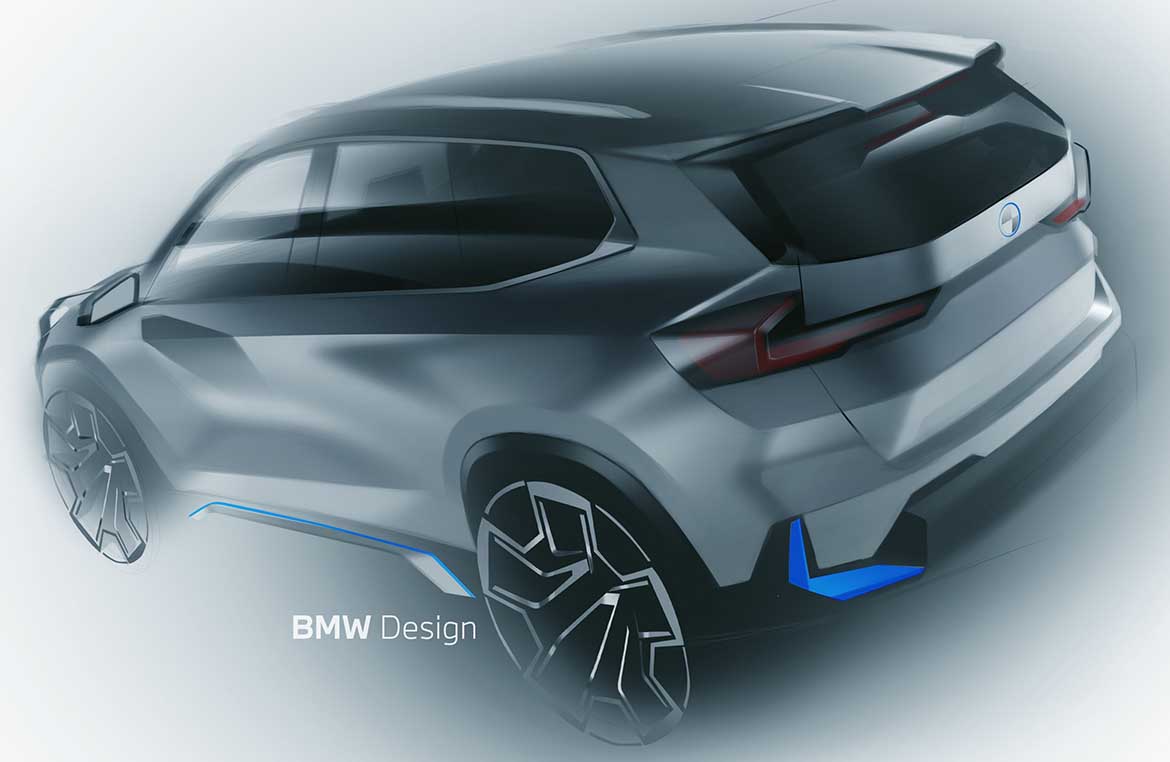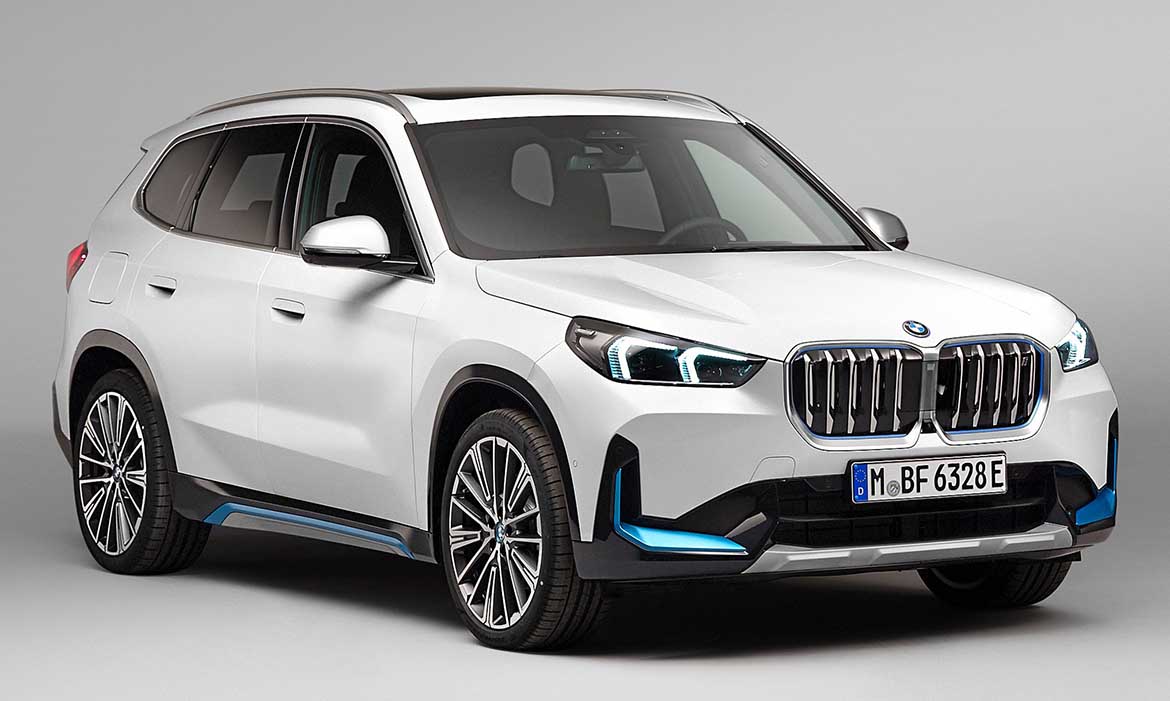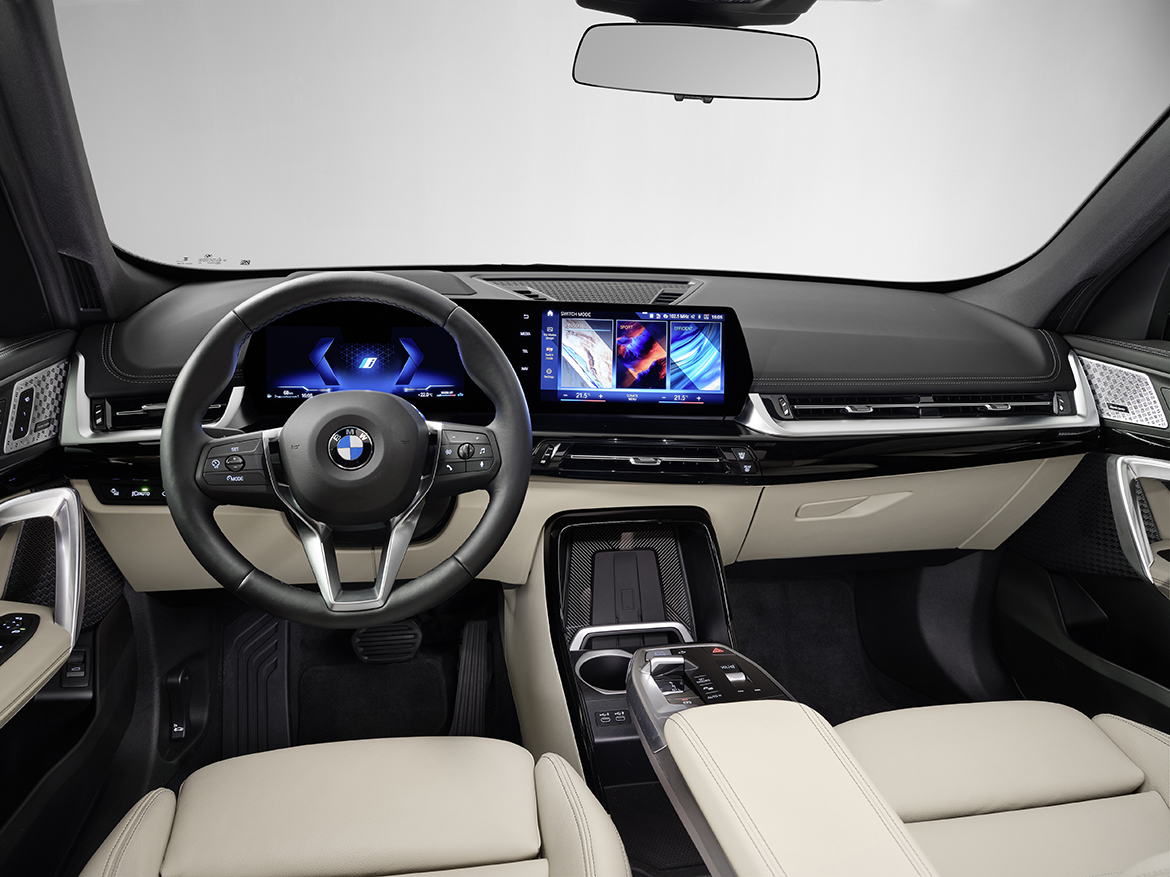The new, third generation of BMW X1 marks a less evident revolution in style than the one that had marked the passing of the baton from the first to the second one, whose decisive change of proportions was due to the replacement of the longitudinal engine architecture with a transverse engine layout and therefore with shorter bonnets, softer shapes and volumes.
This new X1, however, stands out for the character expressed by clearer and more decisive lines, albeit in continuity with the previous one. For example, the central bonnet section is highlinghted and almost takes on the appearance of a powerdome, especially when viewed from the driver seat, and accompanies a more vertical front end with stronger features. The same effect is given by the double kidney grille, larger but with an almost square contours that ideally accompany the wheel arches that are no longer round but trapezoidal, an element in fashion today among SUVs.
On the other hand, the differences between the electric model iX1 and the rest of the range have been eliminated, starting right from the grille: until yesterday a “divisive” element, now it is unified by adopting entirely sealed grids, but with a three-dimensional effect obtained from the contrast of black and chrome elements. Even the touches of blue taken from the bumper inserts of the iX1 are not a distinctive sign: they depend on the trim, like the shape of the bumpers themselves, and can be excluded. Together with the total absence of visible exhausts even on petrol and diesel, this makes the models almost completely identical.
The same happens, except for a few graphic details, even in the interior, where BMW has made the most obvious changes. With the final farewell to manual gearboxes, the central tunnel becomes a suspended island and the controls for selecting the gear, electric or not, are reduced to small levers embedded in the front surface.















